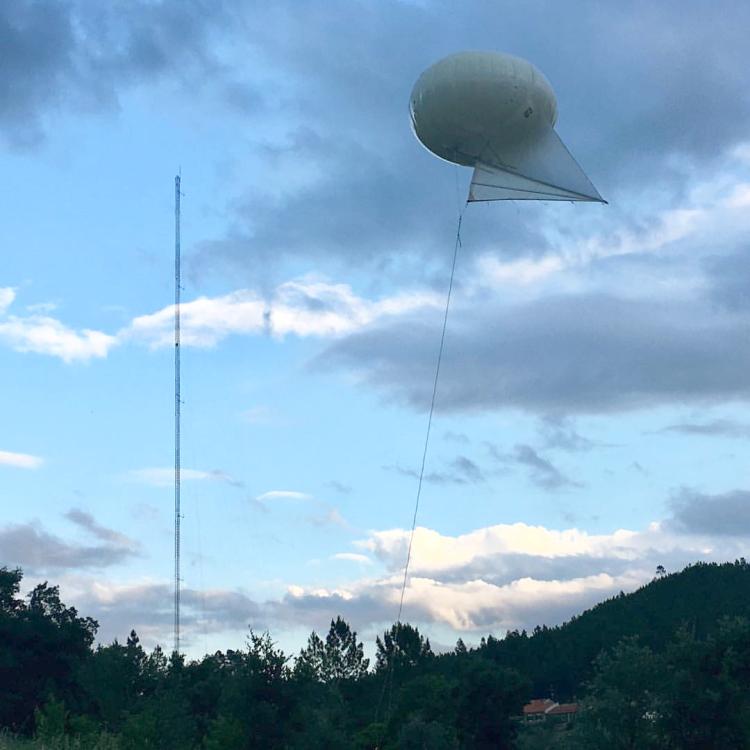Global wind-mapping project commences in Portugal

The project, dubbed Perdigão, will use a tethered balloon kite, or “helikite,” to measure wind at unprecedented resolutions, which should help improve global wind energy electricity generation, said CU Boulder Professor Julie Lundquist of the Department of Atmospheric and Oceanic Sciences, one of two U.S. principal investigators on the project.
Perdigão research also will help predict airflow across complex terrain, which is important for better understanding air pollution, weather forecasting, wildfire forecasting and transportation issues, Lundquist said.
“Assessing how turbulence is generated and decays during flow over complex terrain is of high interest to us,” said Lundquist. “We are would like to know, for example, how turbulence structures develop and evolve overnight in this complex terrain.”
The valley in eastern Portugal under study has two large, parallel ridges located perpendicular to the prevailing wind directions there, which blows most often from the southeast and northwest. The valley also contains both agricultural and forested areas.
“With a wind turbine located on one ridge, we’ll also be able to track how turbulence structures interact with the turbine wake,” Lundquist said.
The field experiment includes more than 50 towers as high as 100 meters, as well as a large wind turbine and a helikite toting a suite of instruments to measure fundamental aspects of atmospheric turbulence, said Lundquist, who holds a joint appointment at the National Renewable Energy Laboratory in Golden, Colorado.
An identical tethered balloon system, built at CU Boulder and operated by the Army Research Laboratory, is makings similar measurements outside the valley, she said.
The U.S. portion of the Perdigão project is funded in large part by the National Science Foundation.
The CU Boulder team working at Perdigão includes doctoral students Laura Mazzaro, Jessica Tomaszewski and Nicola Bodini and undergraduate student Patrick Murphy. The team also includes scientist Ludovic Bariteau of the Cooperative Institute for Research in Environmental Sciences (CIRES), a joint venture of CU Boulder and NOAA.
“Wind energy helps provide electricity we need to help our economy grow without increasing concentrations of greenhouse gases in the atmosphere,” said Lundquist.
The instruments on the CU Boulder helikite will measure wind speed and direction, temperature and relative humidity. The equipment includes sensitive turbulence probes that can measure wind speed at a mind-bending 10,000 times per second.
The CU Boulder team also deployed ground-based lidar scanning instruments that work on the same principal as radar, but use light from a laser, said Lundquist. Lidar systems are typically used just to measure winds, but can also provide insights into atmospheric turbulence. The Perdigão project includes more than 20 lidar systems.
Last year Lundquist received a $510,000 NSF Faculty Early Career Development (CAREER) Award, allowing her to develop new approaches for measuring and simulating turbulence to improve weather forecasts for renewable energy, transportation, air quality and agricultural applications.
Perdigão is part of the European Union’s New European Wind Atlas (NEWA) project, which is expected to provide the best database of European wind in the coming years.


